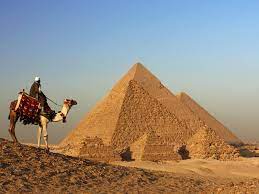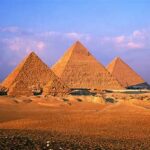Egyptian Museum, Islamic Art & Civilization Museum
–The Coptic Museum
The Coptic Museum houses the largest collection of Coptic artifacts in the world and
was inaugurated in 1910. The museum was established through the efforts of
Marcus Simaika Pasha, a prominent Coptic figure who was vested in the
preservation of Coptic heritage. Simaika Pasha bought and collected Coptic
antiquities and various architectural elements from older churches that were
undergoing renovation, and used them to built the museum and establish its
collection.
The collection represents Coptic history from its earliest beginnings in Egypt
through to its rise as a leading center of Christianity in the world. Coptic Christianity
traces its origins to a visit by Saint Mark in the city of Alexandria in the 1st Century
A.D. The artifacts on display in the museum show the merge of Coptic art with the
prevailing cultures including Pharaonic, Greek, Roman, Byzantine and Ottoman, and
its evolution in developing its own character and identity.
Magnificently decorated manuscripts, icons, delicately carved woodwork and
elaborate frescos with religious scenes recovered from ancient monasteries and
churches are among its extensive collection.
-The Egyptian Museum http://المتحف المصرى
The Egyptian Museum is the oldest archaeological museum in the Middle East, and
houses the largest collection of Pharaonic antiquities in the world. The museum
displays an extensive collection spanning from the Predynastic Period to the Greco-
Roman Era.
The architect of the building was selected through an international competition
in 1895, which was the first of its kind, and was won by the French architect, Marcel
Dourgnon. The museum was inaugurated in 1902 by Khedive Abbas Helmy II, and
has become a historic landmark in downtown Cairo, and home to some of the
world’s most magnificent ancient masterpieces.
Among the museum’s unrivaled collection are the complete burials of Yuya and
Thuya, Psusennes I and the treasures of Tanis, and the Narmer Palette
commemorating the unification of Upper and Lower Egypt under one king, which is
also among the museum’s invaluable artifacts. The museum also houses the
splendid statues of the great kings Khufu, Khafre, and Menkaure, the builders of the
pyramids at the Giza plateau. An extensive collection of papyri, sarcophagi and
jewelry, among other objects, completes this uniquely expansive museum.
-National Museum of Egyptian Civilization(NMEC)
The NMEC is the first of its kind in Egypt and the Arab world. It presents the full
range of the richness and diversity of Egyptian civilization throughout the ages,
from prehistoric times to the present day by focusing on its continuity and stability
as demonstrated by its tangible and intangible heritage. The museum’s exceptional
collection includes the royal mummies, which are exhibited in a new interactive
display using 21st century cutting-edge technology to go beneath the wrappings and
reveal their secrets, in addition to shedding light on the rituals and religious beliefs
surrounding mummification in ancient Egypt.





